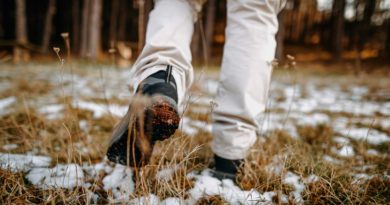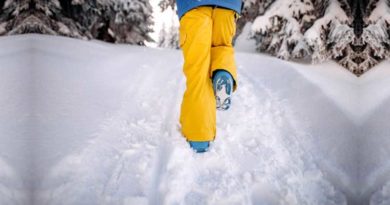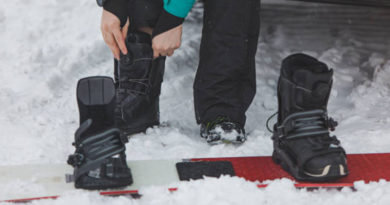How To Tell If Your Snowboard Boots Are Too Big?
Boots are the most important piece of gear for snowboarding. If you think about it, a pair that doesn’t fit you well can easily ruin your experience on the slopes. Your boots should fit right and they should also feel good while riding. If you are feet aren’t comfortable, it doesn’t matter what board or binding you have, you don’t want to ride. So, it’s important to make sure if you are spending money, should spend more on boots than board and bindings. Buy the $200 bindings instead of $250 bindings and put that extra 50 bucks into a pair of boots.
This article will show you how to fit and choose the right size for your boots properly. I will also show you some signs so you can quickly tell if your snowboard boots are running big or small. So keep reading to learn more.
Why do people end up getting bigger boots?
People usually get bigger boots because they think they will wear thicker socks. After all, it will be cold outside. That’s a wrong approach. Most snowboard boots run true to size and you don’t need to size up or down. Whatever size you usually wear in your shoes or sneakers, you are probably going to be about the same size in a snowboard boot too. It’s also important to note that snowboard boots stretch out like any other pair of boots. So, if you are thinking about getting half bigger boots, you may end up getting full or even 1.5 sizes bigger boots.
How to tell if the boot fits right?
When you put your foot into the boot, you do want your toe to touch the front of the liner. You don’t want your toes to be crammed up in there. Just like any other pair of boots, your snowboard boots are also going to stretch out. You can gain a half or even full size depending on how hard you ride. The boot should also hold your heel snugly and you should not get any side-to-side or forward-to-backward movement. Also with the boot on, you should not feel any weird spot pushing and making your foot uncomfortable. Read this article to learn more about how snowboard boots should fit.
Signs your boots are too big
Here are a few signs that indicate your boots are a little too big.
- You lace them tight and you still feel side to side or forward to backward movement
- Your toes aren’t touching the front of the liner
- Your boot is not holding your heel well and you are getting frequent heel lift
- You put your boot on and it doesn’t feel like it’s holding your foot snugly
When a boot doesn’t fit snugly, it causes blister formation. That’s because the foot doesn’t get enough support in all areas, which results in dangling. The dangling foot rubs against the boot and that causes blisters. If your boot is giving you blisters, it’s an indication that the boot is big.
How to avoid buying bigger boots?
To avoid buying bigger boots, it’s always a good idea to measure your foot first. Measuring foot for ski and snowboarding boots is called Mondo. It is basically measuring the length of your foot from heel to toe. It’s also important to note that this measurement should be done barefoot. Once you find the Mondo of your foot, you can then use this table to find your ideal size. You can also consider the width of your foot if you’ve got wide feet. The width is used only when you need wide snowboarding boots. A section in this article explains in detail about measuring the foot and choosing the right snowboard boot size.
Another thing to consider when buying new boots is to make sure you wear them. Wear the pair of socks that you are planning to wear on the slopes. With the shoes on, you should be able to stand and bend on your knees. Again, your toes should be touching the front of the liner. You can also try the women’s version and you may find a better fit. Visit the store in the evening because feet are swollen in the evening giving you a chance to buy boots that will stay comfortable even after long uses. Finally, try to avoid purchasing online. Try to shop in a store so you have the chance to wear them before buying.
What if you already have bigger boots?
If you already have pair of bigger boots, you should get them replaced if possible. But sometimes, it’s not an option. In this case, you can wear a pair of thick socks because the extra padding will help in compressing the parts of the feet that are causing problems. You can also use pads from a blister kit and they will build up the volume of your feet so that your feet stay in place. Use after-market insoles and they will help achieve a better fit. Finally, tighten the laces with extra force and the boot will give you a relatively better fit.




